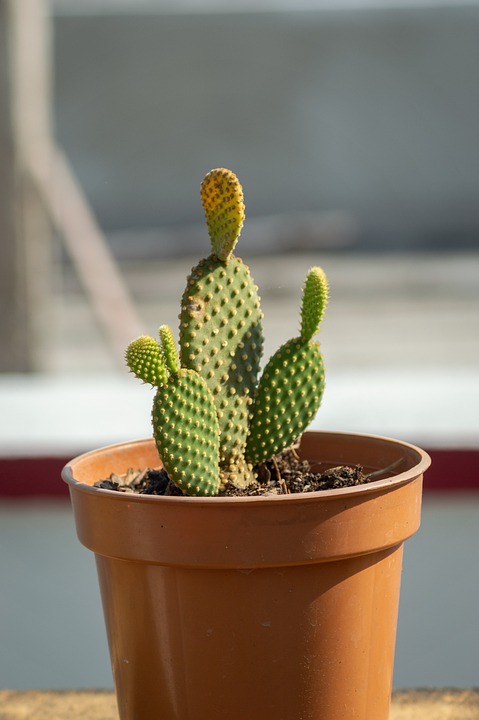Breathe Easy: Transform Your Home with Air-Purifying Plants
In today’s fast-paced world, it’s more important than ever to create a healthy and harmonious living environment. One simple and effective way to improve the air quality in your home is by incorporating air-purifying plants. These green wonders not only add beauty to your space but also work tirelessly to remove toxins and pollutants from the air, leaving you with cleaner, fresher air to breathe.
The Benefits of Air-Purifying Plants
Air-purifying plants offer a multitude of benefits for both your physical and mental well-being. Some of the key advantages of having these plants in your home include:
- Cleaner Air: Air-purifying plants help to filter out harmful pollutants and toxins from the air, such as formaldehyde, benzene, and trichloroethylene.
- Improved Health: Breathing cleaner air can lead to a reduction in respiratory issues, allergies, and other health problems caused by indoor air pollution.
- Enhanced Mood: Studies have shown that being surrounded by plants can have a positive impact on mental health, reducing stress and anxiety levels.
- Natural Humidifiers: Some air-purifying plants release moisture into the air, helping to combat dryness and improve indoor humidity levels.
Top Air-Purifying Plants for Your Home
When it comes to selecting air-purifying plants for your home, there are numerous options to choose from. Here are some of the top plants known for their air-cleaning properties:
1. Spider Plant
The spider plant is a popular choice for indoor spaces due to its easy care requirements and air-purifying abilities. It helps to remove toxins such as formaldehyde and xylene from the air.
2. Peace Lily
The peace lily is not only a beautiful plant with its white flowers, but it also excels at removing mold spores, formaldehyde, and trichloroethylene from the air.
3. Aloe Vera
In addition to its healing properties, aloe vera is a great air purifier, particularly effective at removing formaldehyde and benzene from the air.
4. Snake Plant
The snake plant is a hardy plant that is perfect for beginners. It is known for its ability to filter out toxins like formaldehyde, benzene, and xylene.
5. Boston Fern
The Boston fern is a lush and leafy plant that excels at removing pollutants like formaldehyde and xylene from the air, while also adding a touch of greenery to your space.
Tips for Caring for Air-Purifying Plants
To ensure that your air-purifying plants thrive and continue to clean the air in your home effectively, it’s important to provide them with the right care and conditions. Here are some tips to help you care for your air-purifying plants:
1. Watering:
Most air-purifying plants prefer to be kept moist but not waterlogged. Be sure to water them regularly, allowing the soil to dry out slightly between waterings.
2. Light:
Place your air-purifying plants in a location with adequate sunlight, as most plants require natural light to photosynthesize and grow. However, be mindful of direct sunlight, as some plants can get sunburned.
3. Humidity:
Some air-purifying plants, such as peace lilies and Boston ferns, thrive in humid environments. Consider placing a humidity tray or misting the plants occasionally to increase humidity levels.
4. Pruning:
Regularly prune your air-purifying plants to remove dead or yellowing leaves and encourage new growth. This will help keep your plants healthy and vibrant.
Common Questions About Air-Purifying Plants
1. Do air-purifying plants really work?
Yes, air-purifying plants have been shown to effectively remove toxins and pollutants from the air, helping to improve indoor air quality.
2. How many air-purifying plants do I need for my home?
The number of air-purifying plants you need will depend on the size of your home and the level of air pollution. As a general rule of thumb, aim to have at least one plant per 100 square feet of living space.
3. Can air-purifying plants help with allergies?
Air-purifying plants can help to reduce allergens in the air, such as dust and mold spores, which may alleviate allergy symptoms for some individuals.
4. Do air-purifying plants require special care?
While air-purifying plants do require some care and attention, they are generally low-maintenance and easy to care for. With the right conditions, they can thrive and continue to clean the air in your home.
Conclusion
Transforming your home with air-purifying plants is a simple and effective way to improve the air quality in your living space. By incorporating these green wonders into your home, you can enjoy cleaner air, better health, and a more peaceful environment. With the right care and attention, air-purifying plants can thrive and continue to provide you with the many benefits they offer. So why wait? Bring some greenery into your home today and breathe easy!

















































